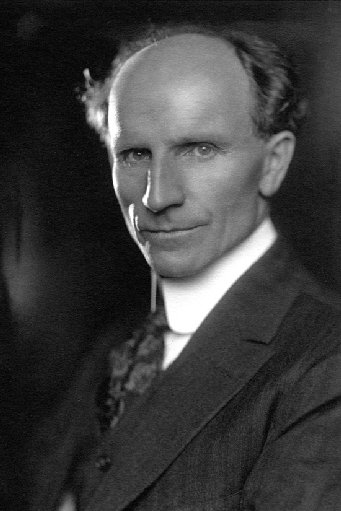the john muir exhibit - people - enos mills
Enos Mills
1870 - 1922

- Naturalist,
writer, and father of Rocky Mountain National Park.
- Mills met Muir
when Mills was a young man and Muir was already an elder statesman;
Mills was inspired to work for conservation and national parks largely because of Muir's influence.
- Calling himself "the John Muir of the Rockies," Mills said, "I owe everything to Muir. If it hadn't been for him I would have been a mere gypsy." [Literary Digest, July 14, 1917]
- In his two 1909 books, The Story of a Thousand-Year Pine, and Wild Life on the Rockies, Mills wrote: "The peculiar charm and fascination that trees exert over many people I had always felt from childhood, but it was that great nature-lover, John Muir, who first showed me how and where to learn their language." He also dedicated the second book to John Muir.
- Muir wrote
to Mills in 1913: "I shall always feel good when I look your way:
for you are making good on a noble career. I glory in your success
as a writer and lecturer and in saving God's parks for the welfare
of humanity. Good luck and long life to you."
- Mills wrote
to Muir in 1914, shortly before Muir's death: "I shall leave for Washington
in a few days to help set things moving for the conservation of scenery....
As you well know, it is the work that you have done that has encouraged
me... in the big work that I am planning to do. If you will push along
another book or two these books will help the cause more than you
can imagine."
- In Mills' 1917 book, Your National Parks, Mills included a chapter about John Muir, in which he wrote, "While ever enjoying the beauty of Nature, he was continually searching for facts. He had the poetic appreciation of Nature. He was the greatest genius that ever with words interpreted the outdoors. No one has ever written of Nature's realm with greater enthusiasm or charm.... He has written the great drama of the outdoors. On Nature's scenic stage he gave the wild life local habitation and character - did with the wild folk what Shakespeare did with man. He puts the woods in story, and in his story you are in the wilderness. His prose poems illuminate the forest, the storm, and all the fields of life. He has set Pan's melody to words. He sings of sun-tipped peaks and gloomy cañons, flowery fields and wooded wilds. He has immortalized the Big Trees. His memory is destined to be ever associated with the silent places, with the bird-songs, with wild flowers, with the great glaciers, with snowy peaks, with dark forests, with white cascades that leap in glory, with sunlight and shadow, with the splendid National Parks, and with every song that Nature sings in the wild gardens of the world."
- At the 1917 National Parks Conference, Mills stated: "But in thinking over the names of those who have been helpful to national parks, and honoring as I do Mr. Cornelius Hedges, who really proposed the first national park, a greater work than that done by all was done by that magnificent man, John Muir. I really feel that John Muir did more for the human race during the century that just passed in good that will be reaped in the century in which we are now living than any other individual. He wrote the poem of the outdoors; he pointed out its beauties; and the name of John Muir will be forever associated with our national parks, with the great glaciers, with the big trees, with sunlight and shadow, with the canyons, with the wildflower gardens, and with every song that nature sings in the wild gardens of the world. Today I am most thankful, among all the heroes in American history, or of the world, to John Muir. I hope and believe that after the names of all the other heroes of nature are forgotten that John Muir's name will live."
Photo Credit: "Enos Mills: Father of Rocky Mountain National Park." Colorado Virtual Library. May 21, 2015. <http://www.coloradovirtuallibrary.org/content/enos-mills>.
Home
| Alphabetical Index
| What's New